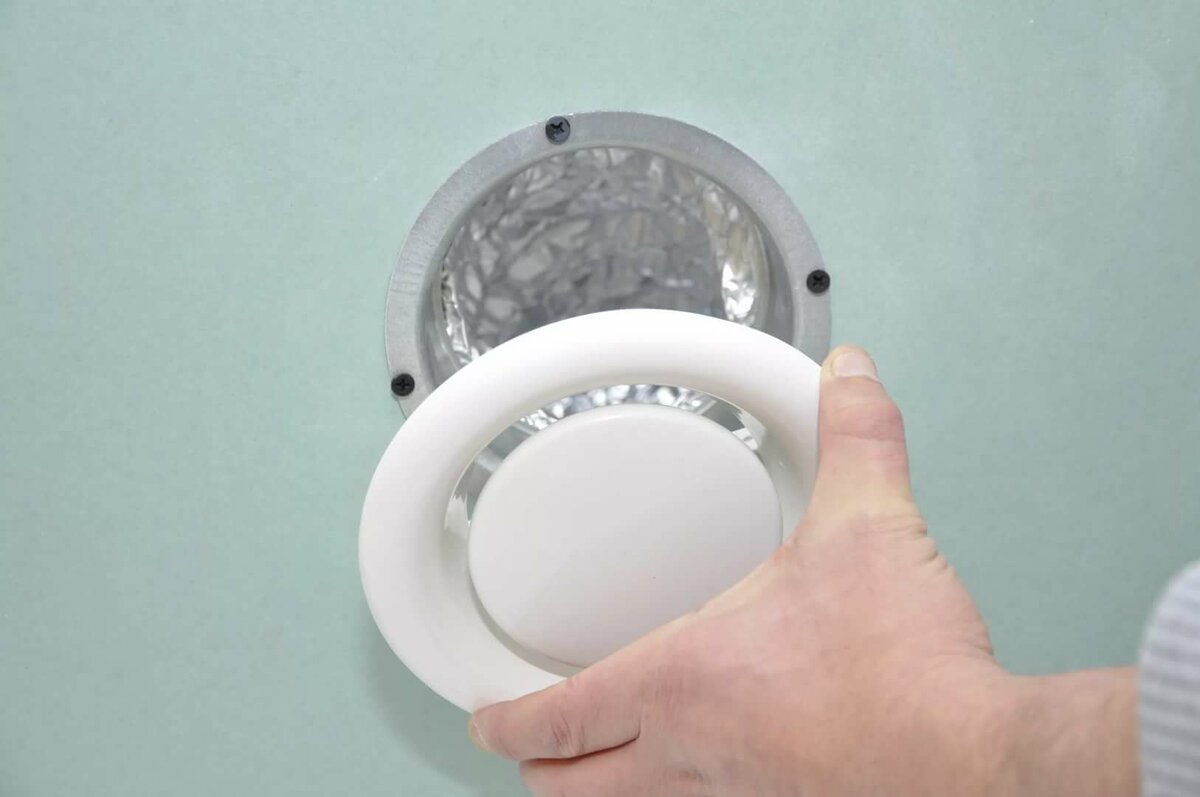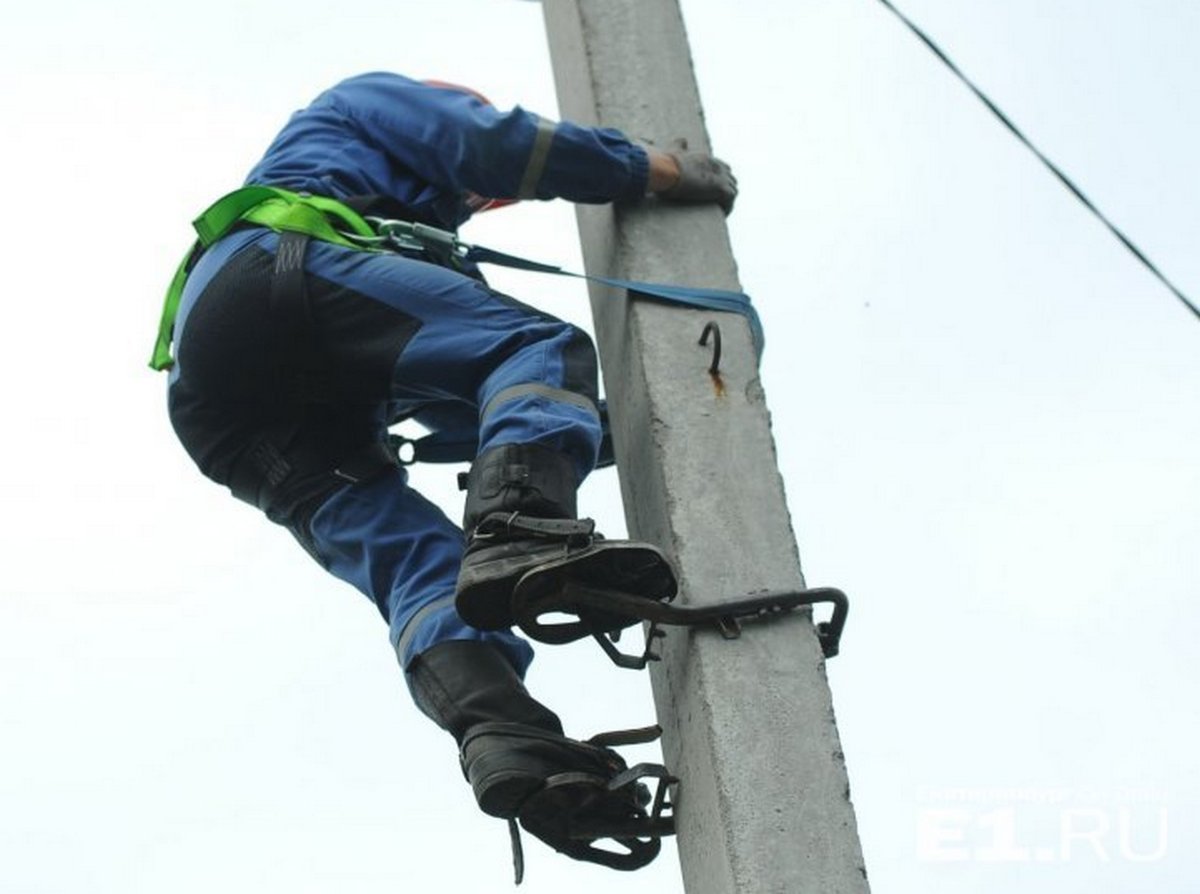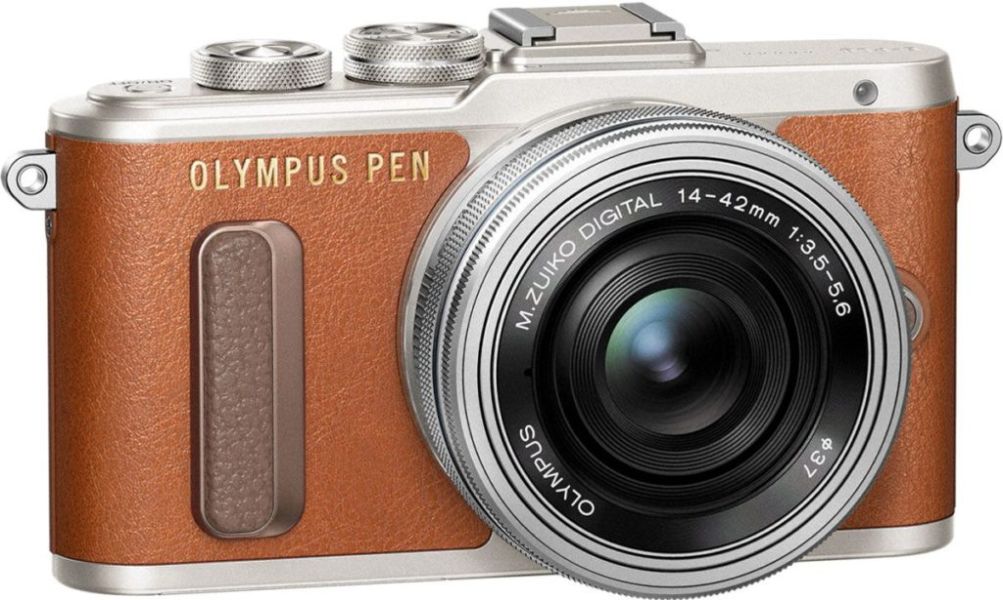Rating of the best ventilation anemostats for 2022

Most people often underestimate the importance of the ventilation system in the rooms they use. This happens because it is rather difficult to feel the presence of good ventilation. But one has only to slightly violate the relevant building codes in the field of installation of the ventilation system, as the room will simply become unsuitable for people to stay - the air in it will no longer be updated and unpleasant odors will begin to accumulate in it.
Today, when constructing buildings, any contractor tries to install the most efficient and economical ventilation system. At the same time, as a rule, contractors use non-standard solutions to optimize financial costs.The most popular such solution can be called equipping ventilation ducts with additional features, namely, the function of additional air distribution using anemostats.
Content
General information about anemostats
An anemostat (aka air diffuser) is a special device that allows you to achieve a confident and efficient distribution of the air entering the room. Such devices successfully resist the occurrence of drafts and are installed both in air handling units and in air conditioning systems. Also, anemostats proved to be excellent in heating systems by means of air flows, which is why they began to be widely used in premises for various purposes - from industrial to public. The main purpose of the device is to prevent aeroconvection, i.e.a process in which air jets cause increased turbulence, thereby reducing the level of comfort for the person present in the room.
The very shape of the anemostat is intended to extinguish air vortex flows, because the air passing through them is forced to flow around the tire of the device, due to which it is evenly dissipated. In addition to correcting the direction of air jets, anemostats can also adjust the volume of new air entering the room or even stop its flow. But the functions of this ventilation device are limited to more than one practical application - it can also play a small aesthetic role - being well-disguised inside the ventilation duct, it can harmoniously fit into the interior of the room and successfully complement its modern design.
By their design, the devices are quite simple. Their body is a shortened piece of pipe, with a spacer installed inside, which supports the adjusting screw. The mounting flange is placed up to the screw and has the shape of a flattened circle (a bit like a dinner plate). The flange itself is fixed on a screw and is able to move along the body of the device, as well as rotate around its own axis.

By turning the “plate” clockwise, this part is pushed forward, thereby increasing the air gap. If you rotate it in the opposite direction, then the gap will decrease and the level of incoming flows will decrease. It is the ability to adjust the volume of incoming air that distinguishes an anemostat from a diffuser - these types of air distributors are often confused with each other.In addition, diffusers can be either round or square, while anemostatic devices are made only in a round shape.
There are models for supply ventilation systems that are equipped with not one, but a pair of "plates" at once, where one differs from the other in a more concave shape and increased dimensions. A device of this design is designed for a more uniform distribution of air flows inside the room and is mounted on the air outlets of reinforced ventilation devices. In addition to the classic configuration, anemostatic devices can be equipped with filtration systems that will be responsible for retaining dust and small mechanical debris that comes with street air. The appearance color of the devices in question may be different - from a simple color variation to an imitation of some material (for example, wood). Therefore, it is not difficult to choose the appropriate model for a certain interior.
The standard diameter of these devices can be from 8 to 20 cm, and the maximum stroke of the "plate" inside the case is determined by the size of the model itself and can approach 23 millimeters. For the production of all parts, light materials are used: plastic or aluminum, wood or galvanized steel. Plastic samples are very popular, because they are characterized by increased moisture resistance, weigh extremely little, and are absolutely not subject to corrosive processes. Another distinctive advantage of them is that they can easily be painted in any color or decorated to match the desired material. Installation of plastic devices is quite easy, in the future they do not require any special care, and they simply cannot rot.Also, the consumer is attracted by their economical price and wide consumer availability. However, their main disadvantage is the low strength of the body and the likelihood of its melting when trying to remove super-hot air flows, which is why they cannot be used in some industrial premises (for example, smelting shops).
Existing varieties
According to their functional purpose, the considered devices are divided into three types:
- Supply samples are distinguished by the fact that their "plate" is concave inward and has a reduced aerodynamic resistance. Air flows passing through such devices will be distributed smoothly and at the same time evenly. Models can be integrated both in the wall and on the ceiling, and the supply air is supplied to them through a divider, which is built into the duct.
- Exhaust samples are equipped with rounded, smooth lids, which are able to efficiently remove spent (old) air masses. Models for the hood are selected taking into account the functional purpose of the room and depending on the characteristics of dirty air. Plastic / metal devices in such systems are used quite often, but wooden samples are almost never used, which is associated with restrictions on the level of humidity and the degree of heating of the discharged air flows.
- Universal samples can function both in exhaust and supply systems, because they are equipped with two divider caps. When they are installed in the hood, two slots can be used at once, while when implementing the inflow system, one hole for the hood is blocked. These samples are controlled only mechanically (manually), the automatic control setting is not applicable for them.
Differences between supply, exhaust and universal models
These variations of anemostats will differ in different directions of movement of air masses. Supply air devices are used in ventilation systems of the same name and are responsible for the uniform distribution of air under the ceiling. The “plate” in the supply units differs from the exhaust units in that it has a more concave inward shape - this is what prevents the person in the room from creating discomfort from the movement of arriving air masses. The "plate" of the exhaust anemostat has a more rounded and smooth surface, which is why air flows easily go around it and are redirected to the exhaust duct.
The characteristics of universal samples are best considered on the A 200 VRF model, which has the largest dimensions among the devices under consideration. It compiled both exhaust and supply forms of the "plate". When using them, it should be remembered that for the hood it is necessary to use both slots of the gaps that form both the supply and exhaust systems. And for the supply, you need to use only one slotted gap, which is formed by the supply "plate", and the exhaust valve, in this situation, must be closed.
Another difference is that if an exhaust anemostat is integrated into the supply system, the air will not be evenly distributed under the ceiling, but, having rounded the device, will rush vertically down. Therefore, for each system it is necessary to use the appropriate device.
Choosing the right air handling unit
The choice of the most optimal anemostat variant should be based on the determination of a number of the following factors, such as:
- Production material;
- Unit dimensions;
- The working range of the "plate";
- Area of slotted holes.
All of the above parameters are completely dependent on the type of premises that are supposed to be served.
Practicality and durability of the material of manufacture
Hardware. They are distinguished by wear resistance and operational durability. An additional plus will be a stylish appearance that goes well with newfangled trends in interior decoration (for example, modern and hi-tech styles). The disadvantage of metal units will be their heavy weight and some difficulties in installation. At the same time, metal devices perfectly conduct highly heated air, so it is advisable to install them in saunas and baths, boiler rooms and combustion chambers.
Plastic products. They are usually used in domestic premises, commercial and office buildings, public institutions. Such units have proven themselves when working in rooms with high humidity (for example, swimming pools and showers, kitchens and laundries, various bathrooms). Their main advantages are undoubtedly:
- Increased moisture resistance - absolutely not subject to corrosion (unlike metal) and do not rot (unlike wood);
- Extreme lightness in weight and ease of installation;
- Variety of models and colors;
- No need for frequent maintenance and unpretentious maintenance;
- Economic price.
However, their main disadvantage is the presence of a fragile body, as well as the fact that they are not designed for pumping hot air currents.
Wooden crafts. It is possible to meet them infrequently, they are used only when the design style of the serviced premises requires it.They will organically look in wooden houses, separate log cabins or saunas, but there they will require frequent preventive care.
Features of the evaluation of technical characteristics
After selecting the model according to the conditions of future operation, determining the required material of manufacture, one should be puzzled by the selection of the following technical parameters, namely: the overall diameter, the dimensions of the slotted hole and the valve stroke.
overall diameter. The size of the section of the head of the device itself must be correlated with the size of the ventilation duct. For example, a 100 mm distributor will fit a corresponding 100 mm duct.
slot hole. This parameter sets the capacity of the unit. The difference in performance depends on the adjustment of the gap by means of the flange. In relatively small models with a diameter of 80 mm or more, the boundary cross-sectional area of \u200b\u200bthe living is 0.002 millimeters square, in aggregates with a size of 200 millimeters this figure can reach 0.009 millimeters square.
running stock. This parameter determines the maximum opening, i.e. the movement of the ceiling along the "normal" line. The operating range of the device will be the wider, the greater the stroke of its valve. Depending on the model, the boundary value can reach from 8 to 30 millimeters.
How to adjust the ventilation plafond
Most of the models on the market today are controlled by manually adjusting the "cymbal" position. The operating mode of the air distribution device is also set mechanically - just turn the "plate" counterclockwise or vice versa.However, the anemostat can be installed in hard-to-reach places, which, for example, may require the production purpose of the serviced premises. From this it is clear that it is extremely difficult to manually adjust the position of the device installed on the ceiling. It is for such cases that automated anemostatic systems are designed. You might think that they are distinguished by some particular complexity of design, but no - they are just an ordinary electrical switch connected to the device.

Mounting Features
Due to the fact that the design of the device in question is quite simple, then its installation is not particularly difficult. The easiest way is to mount the anemostat on a rigid and open air duct. A unit that is suitable for the diameter of the hole is simply selected and attached to the supporting structures. It is possible to install both directly on the body itself as a whole, and on the mounting flange, which can be supplied complete with some models of equipment.
The installation process will be much more complicated if you need to install several devices on ventilation communications. It is always worth remembering that increasing the number of ventilation holes during construction and installation work due to the lengthening of the laid air duct will inevitably lead to the practical inexpediency of installing anemostats. In another case, difficulties may arise if it is necessary to install the device along unclearly laid ventilation ducts - the problem here lies in the accuracy of determining the location of the technological opening for product integration.
Approximate step-by-step installation instructions
In principle, for proper installation, you will need to perform a number of simple manipulations:
- Before starting installation, you need to make measurements of all existing duct communications - this will allow you to find out the optimal diameter of the required device;
- After that, it is required to connect the air duct to the main ventilation duct;
- The end of the resulting connection must be brought to the place where the ventilation window is located;
- Then a hole of the required diameter is drilled in the wall and the supporting element of the unit is mounted in a pre-prepared place;
- The next step is to securely fix the anemostatic air distributor in the opening of the ventilation duct;
- Then the whole structure is connected to the duct;
- An adjusting screw is screwed into the body of an already mounted device and a flange is attached to it;
- The base of the device is fixed to the surface with screws;
- At the end of the installation, the installation of the optimal position of the “plate” is set in order to ensure the effective operation of the system as a whole from the first day.

In the case when the installation of the ventilation system is not the final stage of all construction work, then the visible components of the mounted structure must be sealed with construction tape or covered with paper so that the channels are not clogged with dust and debris. When the system is first started, a correctly installed anemostat will immediately create the impression of a comfortable stay in the room by providing a special microclimate. At the same time, the finishing materials used indoors will be reliably protected from excess moisture accumulation.
Rating of the best ventilation anemostats for 2022
For exhaust system
3rd place: "Era" WUA 10
Standard and inexpensive unit for integration into exhaust systems. Perfectly proved for both in use for household and office rooms, and on big trading areas.Thanks to its lightweight design, the model is successfully integrated into extended air duct systems. The volume of air drawn out is easily regulated by the smooth rotation of the divider.

| Name | Index |
|---|---|
| Manufacturer country | Russia |
| Material | Plastic |
| Dimensions (diameter, mm) | 100 |
| Price, rubles | 200 |
- Possibility of wall or ceiling mounting;
- Fasteners with screws;
- Smooth adjustment.
- Hull fragility.
2nd place: "Era" WUA 20
Another standard type unit from a Russian manufacturer. It is characterized by a large valve diameter, which means that it can be placed on larger volume areas. The case is made of reinforced ABS plastic, which indicates the durability of operation under the right conditions.

| Name | Index |
|---|---|
| Manufacturer country | Russia |
| Material | ABS plastic |
| Dimensions (diameter, mm) | 200 |
| Price, rubles | 400 |
- Covers a large working area;
- Reinforced housing;
- Expanded diameter.
- Not found (for its segment).
1st place: Vesuvius M-150
An improved model of an exhaust anemostat for exhaust hoods. Thanks to the use of stainless steel in the manufacture of the housing, the unit perfectly copes with the distribution of any type of air - from cold to heated. Perfectly will be suitable for installation in furnace chambers and smelting shops. At the same time, it can be used in domestic saunas. The metal case lends itself to decoration.

| Name | Index |
|---|---|
| Manufacturer country | Russia |
| Material | Stainless steel |
| Dimensions (diameter, mm) | 150 |
| Price, rubles | 1500 |
- Metal case;
- The possibility of decorating;
- Multifunctionality.
- High price;
- Small working diameter.
For supply system
3rd place: "Era" 10 APP
It is used in communications of forced type of ventilation. The sample has an original design of the divider, which completely covers the projection at the outlet, which significantly improves the aerodynamic properties. The volume of the passed air is conveniently regulated by the smooth rotation of the "plate" in the central part.

| Name | Index |
|---|---|
| Manufacturer country | Russia |
| Material | Plastic |
| Dimensions (height, mm) | 60 |
| Price, rubles | 150 |
- Economic price;
- Special splitter design;
- Smooth adjustment.
- Again, a fragile body;
- Inability to control hot air masses.
2nd place: "Airone" DVS-P-100
One of the few anemostats used in supply ventilation and made of metal. Additionally, its coating is reinforced with powder enamel, so decoration is impossible. The sample is specially designed for use in industrial premises, capable of processing hot air masses.

| Name | Index |
|---|---|
| Manufacturer country | Russia |
| Material | Stainless steel |
| Dimensions (height, mm) | 100 |
| Price, rubles | 300 |
- Low price for a metal model;
- Fastening to the duct by means of a coupling;
- Ease of maintenance.
- Used only in industrial premises.
1st place: "Helios" DLVZ 100
An infrequent guest on the Russian market from a foreign manufacturer. The model is positioned as exclusively design: the working parts are covered with a decorative cover, an additional filter against dirt and dust is integrated into the model itself.It is possible to install automatic control of the "plate".

| Name | Index |
|---|---|
| Manufacturer country | Germany |
| Material | ABS plastic |
| Dimensions (height, mm) | 100 |
| Price, rubles | 3000 |
- The pattern is used for interior design;
- Availability of additional equipment (filter and grille);
- Sufficient volume for household premises.
- The complexity of the installation;
- High price.
Instead of an epilogue
The conducted analysis of the market showed that the Russian buyer prefers exclusively domestic models - the products of the St. Petersburg company ERA are the most popular. If foreign samples are on sale, then their price is excessively high and they are intended only for decorative purposes. Otherwise, Russian units are in no way inferior to them at a much lower cost.
new entries
Categories
Useful
Popular Articles
-

Top ranking of the best and cheapest scooters up to 50cc in 2022
Views: 131652 -

Rating of the best soundproofing materials for an apartment in 2022
Views: 127693 -

Rating of cheap analogues of expensive medicines for flu and colds for 2022
Views: 124520 -

The best men's sneakers in 2022
Views: 124034 -

The Best Complex Vitamins in 2022
Views: 121941 -

Top ranking of the best smartwatches 2022 - price-quality ratio
Views: 114981 -

The best paint for gray hair - top rating 2022
Views: 113396 -

Ranking of the best wood paints for interior work in 2022
Views: 110320 -

Rating of the best spinning reels in 2022
Views: 105330 -

Ranking of the best sex dolls for men for 2022
Views: 104368 -

Ranking of the best action cameras from China in 2022
Views: 102217 -

The most effective calcium preparations for adults and children in 2022
Views: 102012









